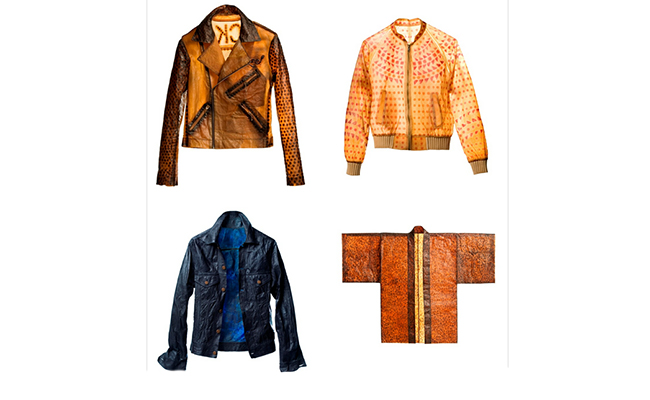
In the world of eco-design, nixing animal products is a no-brainer. New alternatives for materials like fur and feathers are being discovered all the time and yield some pretty interesting results.
So what’s next in the world of vegan fashion?
Introducing BioCouture, a textile research project that sounds a little bit like science fiction. Suzanne Lee, the director of the project, is using her design background in collaboration with scientists to bring a new innovation to textiles.
Most fabrics are created from plant or animal fibers. However, Lee has developed a completely different material source, as well as a new way of production. Using microbes, BioCouture fabric is grown and the resulting textile is a thick, flexible material that emulates leather.
Here’s how it works: microorganisms are released into a solution of green tea, sugar, and yeasts. The sugar serves as the bacteria’s food source and release threads of pure cellulose, which stick together and begin to form a “skin.” The process takes about three weeks and yields a material that is about 1.5 centimeters thick.
Once the fabric has “grown,” it is removed from the bath and can be used in one of two ways: While wet it can be molded onto a three dimensional form (such as a dress form) which creates a perfectly molded shape. It can also be dried flat and cut and sewn like regular fabric.
The textile has other eco-friendly features. It is easy to be dyed and printed on, as it uses much less dye than other fibers normally would. Additionally, it is a no-waste material; it can be safely composted when it is no longer wanted.
The only drawback to the fabric is its absorbency: if exposed to rain it can get very soggy. Plans are in place to improve its water resistance. As the material is still in development, it is not yet commercially available, but the research is ongoing, and BioCoture is open to collaboration with anyone working in the field.
